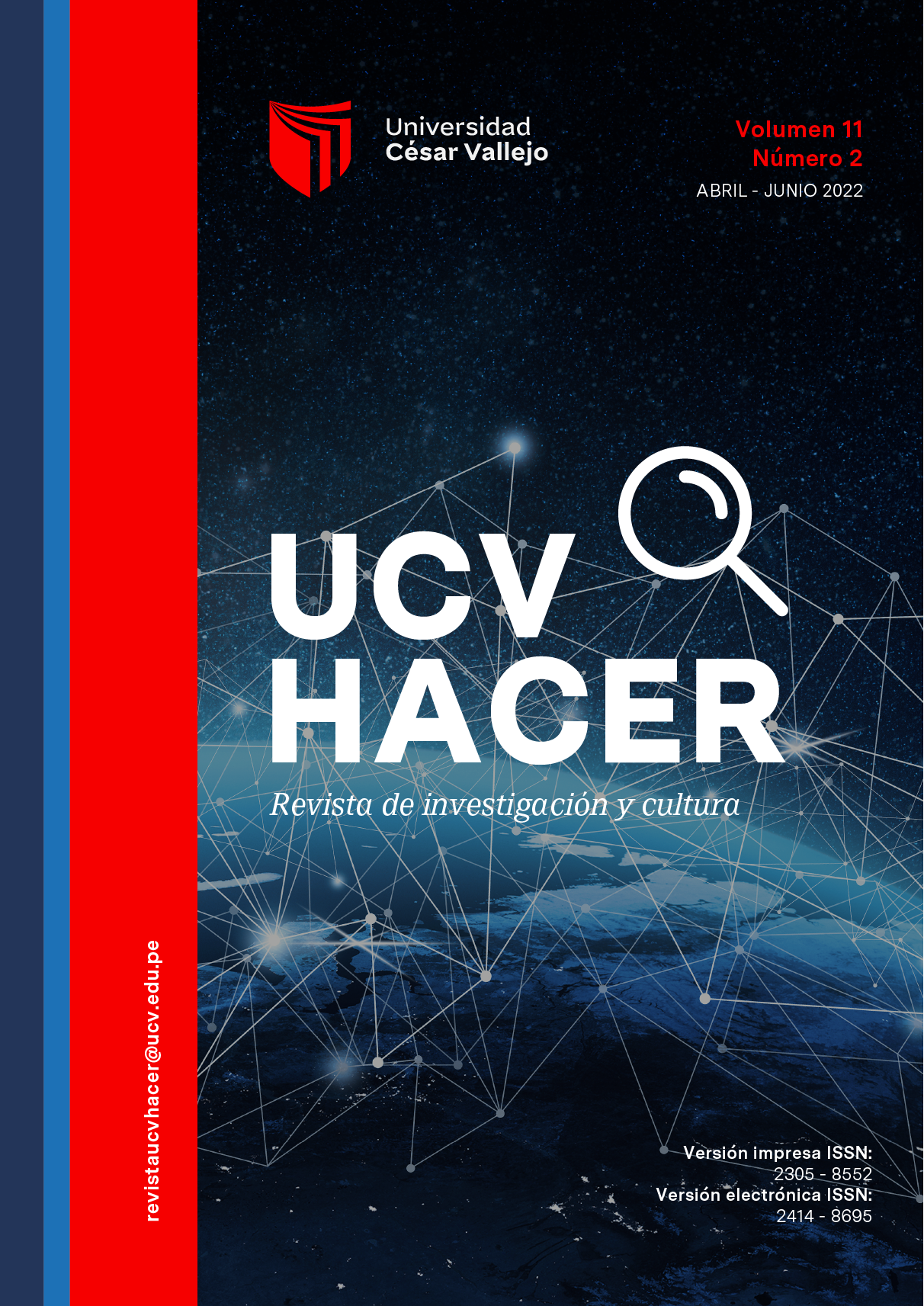Propiedades psicométricas de la escala de estrés percibido en adultos de 20 a 35 años de la ciudad de Chiclayo
DOI:
https://doi.org/10.18050/RevUCVHACER.v11n2a7Palabras clave:
Estrés percibido, Psicometría, AdultosResumen
La presente investigación tuvo como objetivo principal Determinar las propiedades psicométricas de la Escala de
estrés percibido en adultos de 20 a 35 años de la ciudad de Chiclayo, 2021. El estudio es de tipo cuantitativo de
diseño instrumental, la muestra estuvo conformada por 384 adultos que se seleccionaron mediante un muestreo no
probabilístico por conveniencia. Los resultados que se obtuvieron, para la validez se desarrolló mediante el método de
Correlación de Ítem test Corregida, el análisis factorial, valores de extracción y componentes rotados obteniendo
valores significativos, lo que se considera aceptable en esta investigación. Posteriormente se realizó el análisis
descriptivo de los ítems en el que se demostró apropiados índices de la media, desviación típica, varianza, el
coeficiente de asimetría y curtosis de Fisher; lo cual indica que todos los reactivos tienen una distribución normal.
Además, se realizó el análisis de fiabilidad mediante con el Coeficiente Alfa de Cronbach de 0,806 y el método de
dos mitades de Spearman Brown de 0,867. Finalmente se estimó los parámetros de baremación percentilar en las
siguientes categorías: Nunca o casi nunca está estresado (2-24), ocasionalmente está estresado (28-47),
frecuentemente está estresado (52-72) y muy frecuentemente está estresado (82-100), en el que se garantiza la
medición de la variable. Concluyendo así que la PSS-14 reúne adecuadas propiedades psicométricas para evaluar la
variable.
Palabra clave: Estrés percibido, psicometría, adultos.
Descargas
Descargas
Publicado
Versiones
- 2022-06-03 (3)
- 2022-06-12 (2)
- 2022-06-03 (1)
Número
Sección
Licencia
Derechos de autor 2022 UCV Hacer

Esta obra está bajo una licencia internacional Creative Commons Atribución-NoComercial-CompartirIgual 4.0.










